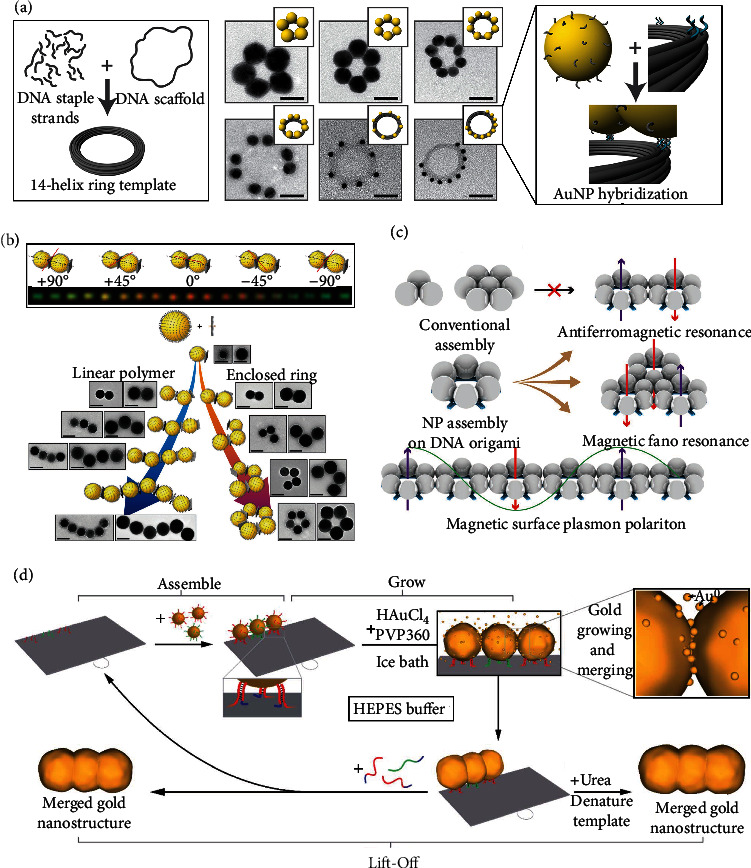Figure 5.

Regular arraying and assembly of gold nanoparticles using DNA origami. (a) Left diagram: self-assembly of DNA origami nanoparticle rings. Right graph: schematic illustration and TEM images of 14HB with multiple AuNPs. Enlarged panel: DNA-functionalized AuNPs were attached to specified positions on the 14HB via hybridization of the handle sequences protruding from the 14HB and the complementary DNA strands on the AuNPs. Scale bars: 40 nm. Adapted with permission from Ref. [34]. Copyright 2015 American Chemical Society. (b) Top panel: dark-field images concerning the angular deviation between the incident electric field (red axis) and long-axis of the dimer. Bottom panel: route for metamolecular assembly of 3D DNA origami and AuNSs (60–100 nm) together with representative TEM images of each assembled motif. Scale bars: 100 nm. Reprinted with permission from Ref. [80]. Copyright 2018 Wiley. (c) Programmable assembly of DNA origami leads to complex magnetic plasmon architectures, including magnetic surface plasmon polariton. Adapted with permission from Ref. [81]. Copyright 2019 Wiley. (d) Schematic diagram of employing the Assemble, Grow, and Lift-Off (AGLO) strategy to construct a predesigned gold nanostructure. Reprinted with permission from Ref. [82]. Copyright 2020 Royal Society of Chemistry.
